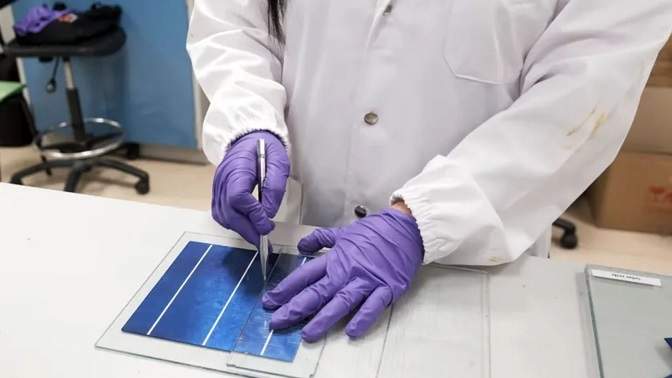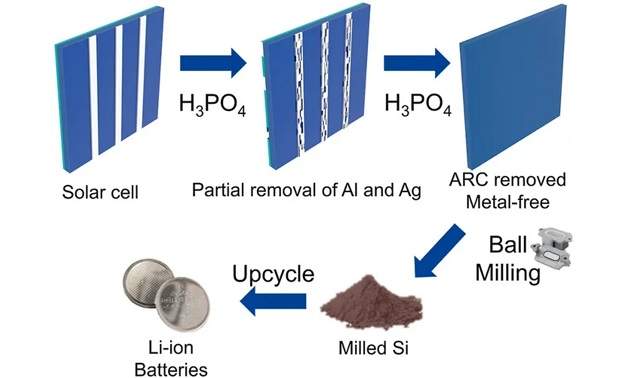NTU Singapore found a way to extract high-purity silicon from old solar panels to reuse it in lithium batteries.
In a world increasingly driven by renewable energy and electric mobility, the intelligent reuse of resources becomes a priority.
In this context, scientists from Nanyang Technological University Singapore (NTU Singapore) have taken a step forward by developing an innovative method to recover high-purity silicon from disused solar panels, giving them a second life as essential components in ion batteries lithium.

Silicon, a predominant component in solar cells, tends to be discarded when the panels reach the end of their useful life, which is typically around 25 to 30 years.
This material is known for its high purity, but its separation from other elements present in solar cells, such as aluminum, copper, silver, lead, and plastic, has been a persistent challenge until now.
Additionally, recycled silicon often contains impurities and defects that make it unsuitable for use in silicon-based technologies.
A new efficient, and cheaper silicon recycling method
Conventional silicon recovery methods require a large amount of energy and use toxic chemicals, making the process expensive and unsustainable.
However, the method developed by NTU has proven to be highly effective by achieving a higher recovery rate and purity than traditional techniques, using only one reagent, phosphoric acid.
Associate Professor Nripan Mathews, leader of the research, highlighted the efficiency of this method in reducing the need for additional chemical treatments and achieving a recovery rate of pure silicon comparable to that obtained using energy-intensive techniques.
A crucial aspect of this innovation is its impact on waste management. With an estimated 78 million tonnes of obsolete solar panels in 2050, the NTU method could play a key role in reducing the carbon footprint and sustainably managing this waste.
Silicon suitable for electric vehicle batteries
Silicon is seen as a promising solution for lithium-ion batteries for electric vehicles, as demonstrated by recent projects such as Amprius.
Not surprisingly, it offers greater autonomy and faster charging times, making it an essential component in the next generation of anodes for electric vehicle batteries.
Given the growing demand for high-purity silicon for these applications, the NTU recovery method is presented as a viable and sustainable solution.

The recovery process involves immersing obsolete solar cells in hot dilute phosphoric acid to remove metals from their surface, followed by a second treatment to ensure the purity of the recovered silicon.
The results are impressive, with a recovery rate of 98.9% and purity of 99.2%, comparable to new silicon purchased on the market.
The conclusion from the data presented by NTU is that its focus on recovering silicon from solar panels opens up new possibilities in the lithium-ion battery industry and waste management.
It not only demonstrates how we can reuse resources efficiently but also offers a sustainable alternative in a world looking for cleaner and more environmentally friendly energy solutions.
Related Post
